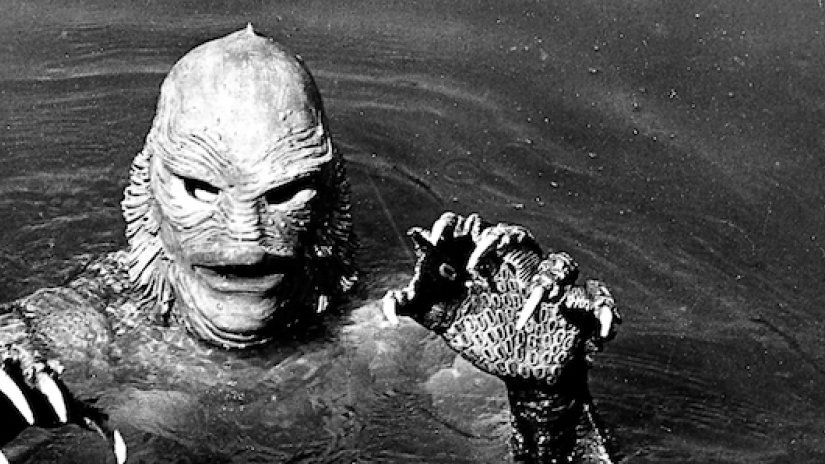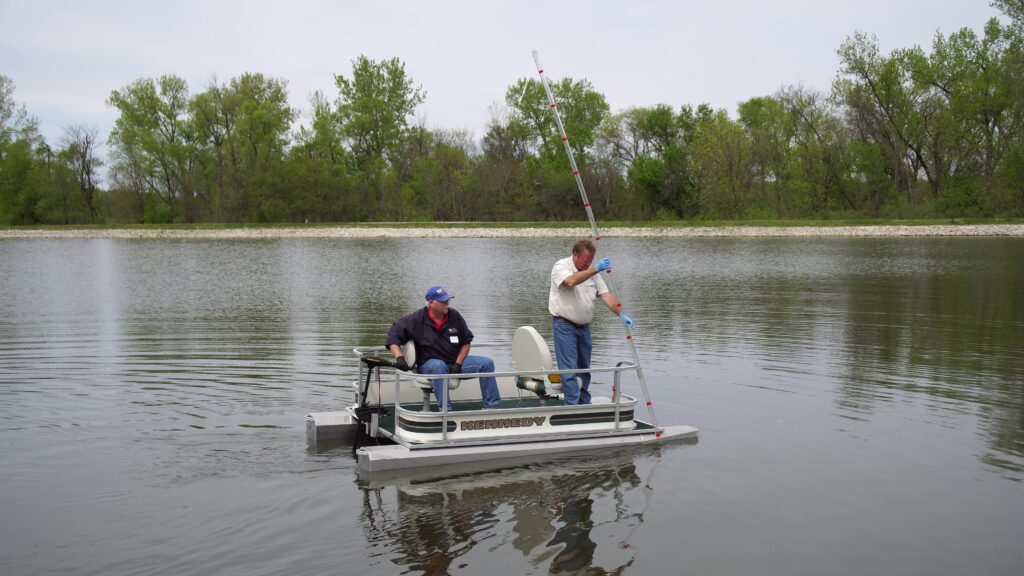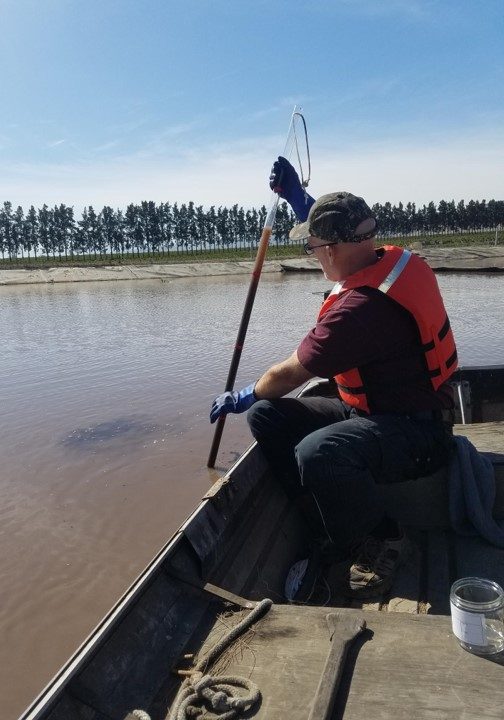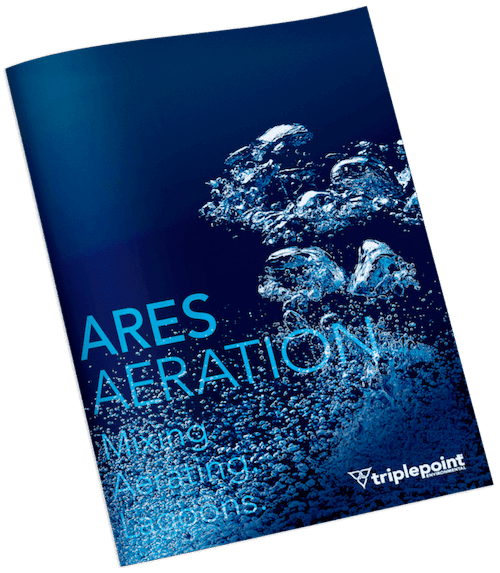
There may be danger lurking at the bottom of your lagoon, and it’s not The Creature. It’s sludge. Excessive sludge accumulation can cause all sorts of treatment problems, including effluent violations and odor. (For more about the dangers of sludge, read our blog, Causes and Effects of Wastewater Lagoon Sludge Explained.)
Most wastewater lagoons are designed for a certain amount of sludge storage, so sludge is typically not a daily concern for the operator. Many permits require wastewater lagoon sludge to be measured at least annually after five years of service. Even if it’s not required, it’s important to keep tabs on the rate of accumulation so you can calculate retention time, budget for future dredging expense, and prevent the problems caused by excessive sludge.
This article will review some of the most popular methods of doing a lagoon sludge survey.
Going Deep
The thickness of the sludge blanket at the bottom of a lagoon can be calculated by measuring the overall depth from the surface of the water to the lagoon bottom, and then subtracting the depth from the surface of the water to the top of the sludge.

There are several different methods for determining the depth from the surface to the top of the sludge:
- Infrared sensor: A number of companies manufacture infrared sensors, like the Sludge Gun®, specifically for the purpose of calculating water depth to the top of the sludge layer. The drawbacks are the cost (from $750–1,500) and their inaccuracy in wastewater with a high solids content.
- Sonar depth finder: Often used by recreational boaters and fishermen, a sonar depth finder emits a high-frequency signal to determine depth. While less expensive ($200 or less) than an infrared sensor, it is not designed for sludge surveying; results should not be relied upon without adequate testing.
- The University of Georgia’s Department of Biological and Agricultural Engineering, building on research from the University of Illinois, developed a remote controlled airboat for the purpose of lagoon sludge surveying. The air-powered craft, equipped with a sonar device and GPS, showed promising results—as much as 20 times faster and 70 percent less labor intensive than traditional methods. However, more research is needed.
- Disk on a rope: A secchi disk, which is used to gauge the clarity of water, or a similar disk or plate attached to a rope, can be lowered into the water until it meets resistance. The depth is then revealed by intervals marked on the rope.
- Sludge judging: This popular method needs relatively inexpensive equipment, gives good results, and allows the operator to take depth measurements and collect core samples to calculate sludge mass at the same time. A sludge judge is a long, 2″ diameter clear PVC pipe with a flap foot valve, which is slowly lowered into the lagoon. When the valve reaches the sludge layer, the liquid level inside the pipe will drop relative to the water level outside the pipe and the depth can be recorded. Alternately, the pipe can be pushed through the sludge layer to the floor of the lagoon, and sludge depth can be measured from the core sample.

Good Lagoon Sludge Survey Practices Mean Accurate Results
Because sludge accumulates unevenly on the bottom of the lagoon due to factors like wind, temperature, the aeration pattern, influent piping locations, and pond geometry, it’s necessary to take multiple measurements across the lagoon. Steve Harris, author of Wastewater Lagoon Troubleshooting: An Operators Guide, recommends installing permanent bench markers around the lagoon so operators have a consistent reference point from year to year. He suggests the operator take between 12 and 36 sludge blanket thickness measurements, depending on the size of the lagoon, and about 12 core samples for solids analysis.
The percentage of solids in the sludge can vary tremendously depending on the characteristics of the influent and how much of the sludge layer is nonvolatile solids like sand and grit. Once the core samples are tested for total solids (TS) and volatile solids (VS), the ratio of VS to TS will reveal how much indigestible material is accumulating over time.
At each measurement point, DO (dissolved oxygen) and pH readings should also be taken. Because DO and pH change at the sludge blanket level, these readings will help to confirm the results of the depth measurements.
Collecting and Analyzing Data
Getting good information from a lagoon sludge survey requires attention to detail and a lot of math. Fortunately, there are resources available to help record and process the collected data.
The Biological and Agricultural Engineering Department of North Carolina State University Cooperative Extension Service has published a guide to Sludge Survey Methods for Anaerobic Lagoons. Appendices to this guide include a sludge survey form, datasheet, and a worksheet to calculate sludge volume and treatment volume.
Now What?
If the results of the lagoon sludge survey show excessive sludge buildup and a reduction in capacity and retention time, sludge will need to treated or removed. We cover this topic in detail in our blog post, Wastewater Lagoon Sludge: Treatment or Removal?
The options for wastewater lagoon sludge treatment or removal aren’t plentiful, and depend on how much sludge has accumulated. If excess sludge has built up to where you have effluent violations, then dredging is likely your only option. If there’s still time, excess sludge can be mitigated with the mixing and aerating Ares Aerator®. Robust mixing through the water column will resuspend the settled solids and collide them with the dissolved oxygen provided by the fine-bubble diffusers, allowing for efficient aerobic digestion.
Download the brochure for more information on how you can retrofit your lagoon in order to improve aeration and mixing, prevent additional sludge buildup, and treat accumulated sludge.

